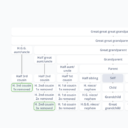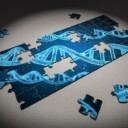Make the most of Living DNA's Black Friday deals
With every kit and upgrade reduced, it’s the ideal time to begin a project that turns your DNA results into something lasting and personal.
All articles
Can you find out if you have French ancestry?
Now, you may be wondering if some of France's rich and interesting history intertwines itself with your own ancestral past, and we’re here to share the good news. Thanks to DNA testing from LivingDNA, the mysteries of your ancestors can now be revealed…
Can you find out if you have Dominican ancestry?
This island offers an interesting fusion of histories and cultures, many of which may be part of your own personal ancestry, as we are going to show you...

Can you find out if you have Eastern European ancestry?
In this article, we are going to see if you can find out more about your ancestry, more about the vague term ‘Eastern European’, how to go about finding more information through self-research, if ancestry can offer citizenship benefits, and how we can help you.

Can you find out if you have German ancestry?
There are various ways to explore and uncover the mysteries of your German ancestral past.

Can you find out if you have Italian ancestry?
The ancestry of Italian people is primarily influenced by events that took place a couple of millennia ago, combined with the important geographic location of the Italic Peninsula. Discover more about Italian Ancestry here.

Can you find out if you have Mexican ancestry?
In this article we will be looking at Mexican ancestry, providing information about your potential Mexican roots, ways to find out more about your ancestors, and what DNA testing can offer you.

Making the most out of your Living DNA wellbeing results
We will be explaining how best to take your wellbeing results and make good use of them, along the way learning how your genetics affect your metabolism, vitamin response, sports performance, recovery, and how to manage your health better.

Can you find out if you have Asian ancestry?
For people looking to find out more about their potential Asian ancestry, Living DNA is here to provide more detail and clarity about where your ancestors came from and moved to.

Centimorgan Chart: Understanding DNA Relationships
Unsure about Centimorgans and DNA Segments? Discover our guide as well as our helpful DNA Relationship/Centimorgan Chart.

Can you find out if you have Puerto Rican ancestry?
When it comes to ancestry, finding out about your Puerto Rican roots can be the start of an incredible journey.

Family Networks update May 2020
Extended matching is here! 99% of our users who have opted into Family Networks now have matches.

National DNA Day 2020: The History of DNA
All the way from 5000BC to the present day, discover the history of DNA!

DNA Day 2020: What is it and why do we celebrate it?
Each year, on the 25th of April, people around the world come together to celebrate a huge leap in modern science. Of course, we are talking about DNA Day.

What are Haplogroups? Living DNA explain
In this article, we intend to educate you about haplogroups, whilst answering some of the most frequent questions surrounding them.

Can you find out if you have Iberian ancestry?
So you’re probably wondering if you might have some trace of Iberian in your DNA. Find out more here.

The most advanced DNA test for people with African ancestry - five times the detail of any other DNA test
The Living DNA team is excited to announce a major expansion of our ancestry report, offering five times the detail in Africa of any other DNA test on the market.

European panel update
We are excited to announce the arrival of 9 new regions to our European panels and, for the first time ever, the ability to update your ancestry results has been put into the hands of our users.

Can you find out if you have Scottish ancestry?
Discovering that you have Scottish ancestry will open your mind to the mysteries and curiosities of this stunning nation and its people.

Fitness & Nutrition Deep Dive
Our co-founder, Hannah Nicholson, shares her Living DNA fitness and nutrition results and what they mean to her.

Living DNA January update: Family DNA matching
Family Networks is our family matching service - our way of matching you to relatives you might not even know you had!
